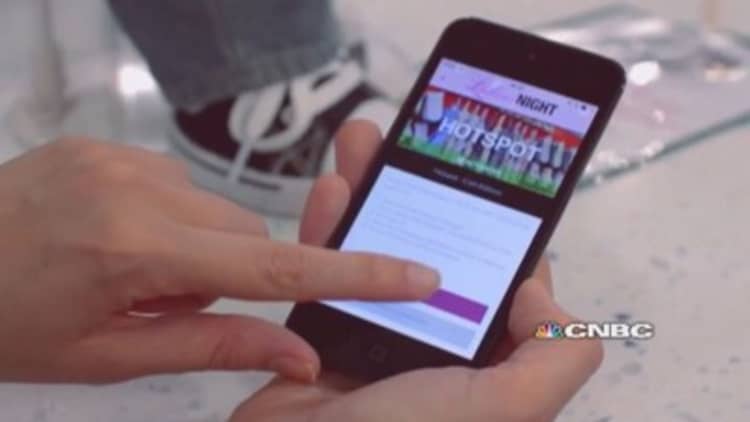
Contactless payments, click and collect and 3D printing are just some examples of how the retail industry is embracing the latest technology in the hope of stopping the decline of traditional bricks-and-mortar stores.
In December 2013, nearly 20 percent of non-food items in the United Kingdom were bought online, according to the British Retail Consortium. In the United States, meanwhile, suburban shopping malls are fast becoming relics, reminders of a bygone era when consumers shopped on foot and paid with cash.
Earlier this year, Rick Caruso, CEO of Caruso Affiliated, one of the U.S's biggest developers of retail complexes, spoke about this shift. "Within 10-15 years, the typical U.S. mall – unless it is completely reinvented – will be a historical anachronism, a 60-year aberration that no longer meets the public's needs, the retailers' needs, or the community's needs," he said.
Read MoreCould your next car be solar powered?
Innovation, however, is helping stores and malls to fight back, offering a vision of the future in which technology brings shoppers back to the streets.
TagPoints is a Brighton, UK, based start-up using innovative 'beacon' technology to create an immersive retail experience for shoppers.
"Beacons are low energy, Bluetooth transmitters. They're sometimes known as iBeacons because Apple [has] popularised them," Jess Stephens, director and co-founder of TagPoints, told CNBC in a phone interview.
It is hoped that this technology will attract customers back to shopping centers.
"It allows you to send real-time messages to customers' smartphones when they're on the shop floor, because they emit a wireless signal," Stephens added.
"The phone picks that up and sends the consumer a message. They have a range of about 70 meters so they can ping this signal out about 70 meters, but they can also be configured so they can have accuracy to within inches," she said.
Read More10 innovations that changed the world
Earlier this year, The Swan Center, a shopping mall the south of England, became the first in the U.K. to use beacon technology developed by TagPoints. Customers download an app, and upon entering the center receive real time offers from retailers, as well as loyalty points, which can be redeemed in the center's stores.
The owners of The Swan Center have paid to use TagPoints technology, but outside of malls, individual retailers can also pay for the service.
"The internet's taken a lot of people out of the centers… I believe that technology and the internet can help bring people back," Daniel Kitchen, Center Manager, The Swan Shopping Center, told Episode 12 of CNBC's Industrial Revolutions.
"There's now a trend of how we use technology to enhance the shopping experience rather than use technology to be the only shopping experience," he added.
While TagPoints is looking to enhance the in store experience, Sayduck, a London based company founded by Mikko Martikainen, has developed an app which uses cutting augmented reality technology to bring catalogs to life and enable customers to see how everything from a sofa to a bookshelf would look in their home.
"The technology… superimposes a 3D model of the product you want to see on top of the camera view on your mobile device, so it looks like you already have that product at home," Martikainen told Industrial Revolutions.
Global brands such as designer kitchen manufacturer Alessi are using Sayduck, and Martikainen believes that his company is well placed to take advantage of our growing appetite for online shopping.
Read MoreMeat: Would you give it up to save the planet?
"We're going to bridge the divide between offline and online," he said. "Statistically, if you look at online sales, especially with larger items…there's still a lot of shopping cart abandonment: people still need to go to the shop and product returns are an issue," he added.
"We solve a huge problem in that area: people can make more informed decisions, [and] experience that nice browsing experience within an online context."
Follow us on Twitter: @CNBCWorld

